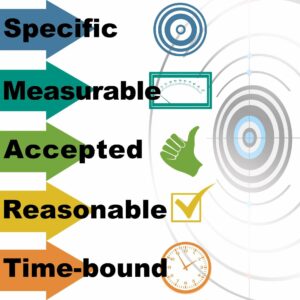Top 5 Reasons Why Projects Fail and How to Avoid Them

Any project is likely to encounter some bumps along the way, but projects will fail because of small mistakes that end up silently derailing them. The good news, however, is there are ways to avoid these pitfalls and set your projects up for success. Here are the top 5 reasons why projects fail and what you can do to dig yourself out of the trenches of a project gone astray.
1. Poor Scope-Definition and Management
To start out on the right foot, it’s essential to define and plan a project. The key is to know what you’re delivering and be aware of the boundaries of the project. Once the project begins, requirements might change from what was first agreed upon, or additional work may be needed. There are many different “threats” that can take your project off track – human, operational, “reputational”, financial, technical, political, etc. This is when you take a look at the scope of the project and determine the likelihood of these sort of events happening, so you can develop an early warning system and manage change and threats as gracefully as possible. However, without first clearly defining the scope, you’ll find it challenging to manage change efficiently. Poor scope management practices will have you completing more work than what was originally agreed to and budgeted for. This can lead to increased cost, increased timelines, escalations, demotivated team members, and dissatisfied clients.
2. Not Setting Key Performance Indicators

Key Performance Indicators are meant to motivate, not demoralize. They should be SMART – specific, measurable, attainable, relevant and time-bound. Meaningful KPIs serve as performance measures. They help you understand whether you’re achieving your targets or strategic goals. Without setting KPIs, you can’t gauge the progress of the project or take corrective action when your project is on the verge of failure. KPIs help you benchmark activity in all aspects of your business and are therefore essential.
How many KPIs do you need to measure your project? You don’t need 100 different KPIs, because that will be unmanageable. You may have several micro-metrics that feed into them, but your KPIs should be measured against your higher strategic goals for the project and be as few as possible. Ten KPIs can be effective, five KPIs are even better. One KPI is optimal.
3. Poor Resource Management
Poor resource management can have a negative impact on productivity. Resources in the real world, whether they’re people, materials or equipment, are often limited. It’s important therefore to have a resource allocation plan in place. It helps you identify the number of employees and other resources required to complete the project successfully. Be aware of the fact that your team members aren’t machines. You have to pay attention to the amount of work each member is assigned and budget for additional team members if required. Revisit your resource allocation plan if the needs of the project change and look for the right people to achieve your business goals. Also, make sure your employees have the right equipment and materials to work with, and keep track of the availability of those resources. This will ensure proper workflow and productivity.
4. Poor Time Management
A study conducted by McKinsey suggests that time challenges have a great impact on the wellbeing of both companies and individuals. Out of the 1500 executives that participated in the study, only 9% were ‘very satisfied’ with the way they spent their time. Employees who can’t manage their time properly create conflicts at the workplace and this could, in turn, result in missed deadlines, stressed relationships, financial losses, and dissatisfied customers. Time tracking is critical to the success of any project. It gives you a good understanding of the way things are going and helps you make appropriate time and budget estimations for future projects. Tracking time will also help you to measure risk and estimate how much of the project is complete, enabling you to determine beforehand whether the project is en route to failure. For instance, if the project budget is 1,000 person-hours and after 50 percent of it is used up, only 15 percent of the project is complete, you’ll know right away that your project is at risk.
5. Failure to Use the Right Systems to Manage Projects
It can be quite challenging to make each project a successful endeavor without a proper project management system in place. So, it’s important to use one and sync it with your other business systems like ERP, time tracking, billing, and payroll. This will allow you to effortlessly automate and streamline processes and make management decisions with ease. With the correct systems in place, you can track time, plan future projects, and share documents without any issues and create a seamless team workflow.
These aren’t the only ways to screw up your projects, but with these handy tips in mind, you’ll get off to a good start and have the early warning systems in place to know when and why your projects are failing.
Let’s Get Started. Book a Demo Today.
Journyx helps you track time for projects, payroll, and more. Learn how Journyx can help you use time to your advantage in your business.



